Kinematic Measurements of Novel Chaotic Micromixers to Enhance Mixing Performances at Low Reynolds Numbers: Comparative Study
Abstract
:1. Introduction
2. Geometries Description and Boundary Conditions
3. Governing Equations and Numerical Methodology
- Continuity equation:
- Momentum equation:where P, V, and ρ represent the static pressure, velocity, and density of the fluid, respectively. For Newtonian fluid flow, the species transport equation is expressed as follows:
4. Mixing Rate
5. Kinematic Behavior Process of the Chaotic Flows
5.1. Stretching and Folding Process
5.2. Deformation and Vorticity Intensity
6. Numerical Validation
7. Results and Discussion
8. Conclusions
- The kinematic behavior was influenced by the Reynolds number for all proposed micromixers.
- The new design contributes an enhancement advantage to kinematic measurements, especially for the folding and stretching processes.
- Strong secondary flows were created inside the new micromixer (TL-CM 3), which enhanced the mixing quality compared to the other geometries.
- As the Reynolds number increased, the flow visualization revealed that the vortex created in each micromixer has more vigorous intensity.
- TLCCM exhibited low vortex intensity of stretching and folding compared to the preferable micromixers.
- TLLCM has many geometrical perturbations and chaotic flow that increase the pressure losses within fluid flow.
- Higher rates of Reynolds number have more effects that increase both deformation and vorticity rates.
- As a consequence, for low Reynolds numbers, mixing and kinematic performances for the TL-CM 3 configuration are more important compared to the other configurations.
- The proposed micromixers might be integrated with micrototal analysis systems and LOC systems to facilitate the study of reaction kinetics, enhanced reaction selectivity, and dilution of the fluid sample.
Author Contributions
Funding
Conflicts of Interest
References
- Lee, C.Y.; Fu, L.M. Recent advances and applications of micromixers. Sens. Actuators 2018, 259, 677–702. [Google Scholar] [CrossRef]
- Lee, C.Y.; Wang, W.T.; Liu, C.C.; Fu, L.M. Passive mixers in microfluidic systems: A review. Chem. Eng. J. 2016, 288, 146–160. [Google Scholar] [CrossRef]
- Kim, K.-Y.; Wasim, R.; Shakhawat, H. A Review of Passive Micromixers with a Comparative Analysis. Micromachines 2020, 11, 455. [Google Scholar]
- Mashaei, P.R.; Asiaei, S.; Hosseinalipour, S.M. Mixing efficiency enhancement by a modified curved micromixer; a numerical study. Chem. Eng. Process. Process Intensification 2020, 154, 1–57. [Google Scholar] [CrossRef]
- Yao, C.; Chen, X.; Liu, S. Numerical and experimental investigations of novel passive micromixers with fractal-like tree structures. Chem. Phys. Lett. 2020, 747, 30–37. [Google Scholar]
- Huang, C.-Y.; Hu, Y.-H.; Wan, S.-A.; Nagai, H. Application of pressure-sensitive paint for the characterization of mixing with various gases in T-type micromixers. Int. J. Heat Mass Transf. 2020, 156, 17–31. [Google Scholar] [CrossRef]
- Huanhuan, S.; Kaixuan, N.; Bo, D.; Lemeng, C.; Fengxiao, G.; Mingyang, M.; Mengqiu, L.; Zhengchun, L. Mixing Enhancement via a Serpentine Micromixer for Real-time Activation of Carboxy. Chem. Eng. J. 2020, 392, 123642. [Google Scholar]
- Shakhawat, H.; Ansar, M.A.; Kim, K.-Y. Evaluation of the mixing performance of three passive micromixers. Chem. Eng. J. 2009, 150, 492–501. [Google Scholar]
- Ahmed, F.; Shakhawat, H.; Hyunil, R.; Mubashshir, A.A.; Muhammad, S.I.K.; Kim, K.-Y.; Tae-Joon, J.; Sun, M.K. Numerical and Experimental Study on Mixing in Chaotic Micromixers with Crossing Structures. Chem. Eng. Technol. 2020, 43, 1866–1875. [Google Scholar]
- Arshad, A.; Kim, K.-Y. Analysis and Design Optimization of Micromixers; Springer: Singapore, 2021; pp. 2191–5318. [Google Scholar]
- Kouadri, A.; Douroum, E.; Khelladi, S. Parametric study of the Crossing elongation effect on the mixing performances using short Two-Layer Crossing Channels Micromixer (TLCCM) geometry. Chem. Eng. Res. Des. 2020, 158, 33–43. [Google Scholar]
- Shakhwat, H.; Lee, I.; Kim, S.M.; Kim, K.-Y. A micromixer with two-layer serpentine crossing channels having excellent mixing performance at low Reynolds numbers. Chem. Eng. J. 2017, 327, 268–277. [Google Scholar]
- Chih-Yang, W.; Bing-Hao, L. Numerical Study of T-Shaped Micromixers with Vortex-Inducing Obstacles in the Inlet Channels. Micromachines 2020, 11, 12. [Google Scholar]
- Dena, I.; Trieu, N.; Lisa, J.L. Complete Procedure for Fabrication of a Fused Silica Ultrarapid Microfluidic Mixer Used in Biophysical Measurements. Micromachines 2017, 8, 16. [Google Scholar]
- Chengfa, W. Liquid Mixing Based on Electrokinetic Vortices Generated in a T-Type Microchannel. Micromachines 2021, 12, 2. [Google Scholar]
- Soroush, N.; Saman, R. A new design of induced-charge electrokinetic micromixer with corrugated walls and conductive plate installation. Int. Commun. Heat Mass Transf. 2020, 114, 104564. [Google Scholar]
- Telha, M.; Bachiri, M.; Lasbet, Y.; Naas, T.T. Effect of Temporal Modulation on the Local Kinematic Process of Two-Dimensional Chaotic Flow: A Numerical Analysis. J. Appl. Fluid Mech. 2021, 14, 187–199. [Google Scholar]
- Naas, T.T.; Lasbet, Y.; Aidaoui, L.; Ahmed, L.B.; Khaled, L. High performance in terms of thermal mixing of non-Newtonian fluids using open chaotic flow: Numerical investigations. Therm. Sci. Eng. Progress 2020, 16, 100454. [Google Scholar] [CrossRef]
- Galanti, B.; Gibbonyzk, J.D.; Heritagez, M. Vorticity alignment results for the three-dimensional Euler and Navier–Stokes equations. Nonlinearity 1997, 10, 1675–1694. [Google Scholar] [CrossRef]
- Khakhar, D.V.; Ottino, J.M. Deformation and breakup of slender drops in linear flows. J. Fluid Mech. 1986, 166, 265–285. [Google Scholar] [CrossRef]
- ANSYS, Inc. ANSYS Fluent User’s Guide, Release 16; ANSYS, Inc.: Canonsburg, PL, USA, 2016. [Google Scholar]
- Jibo, W.; Guojun, L.; Xinbo, L.; Fang, H.; Xiang, M. A Micromixer with Two-Layer Crossing Microchannels Based on PMMA Bonding Process. Int. J. Chem. React. Eng. 2019, 17, 8. [Google Scholar]
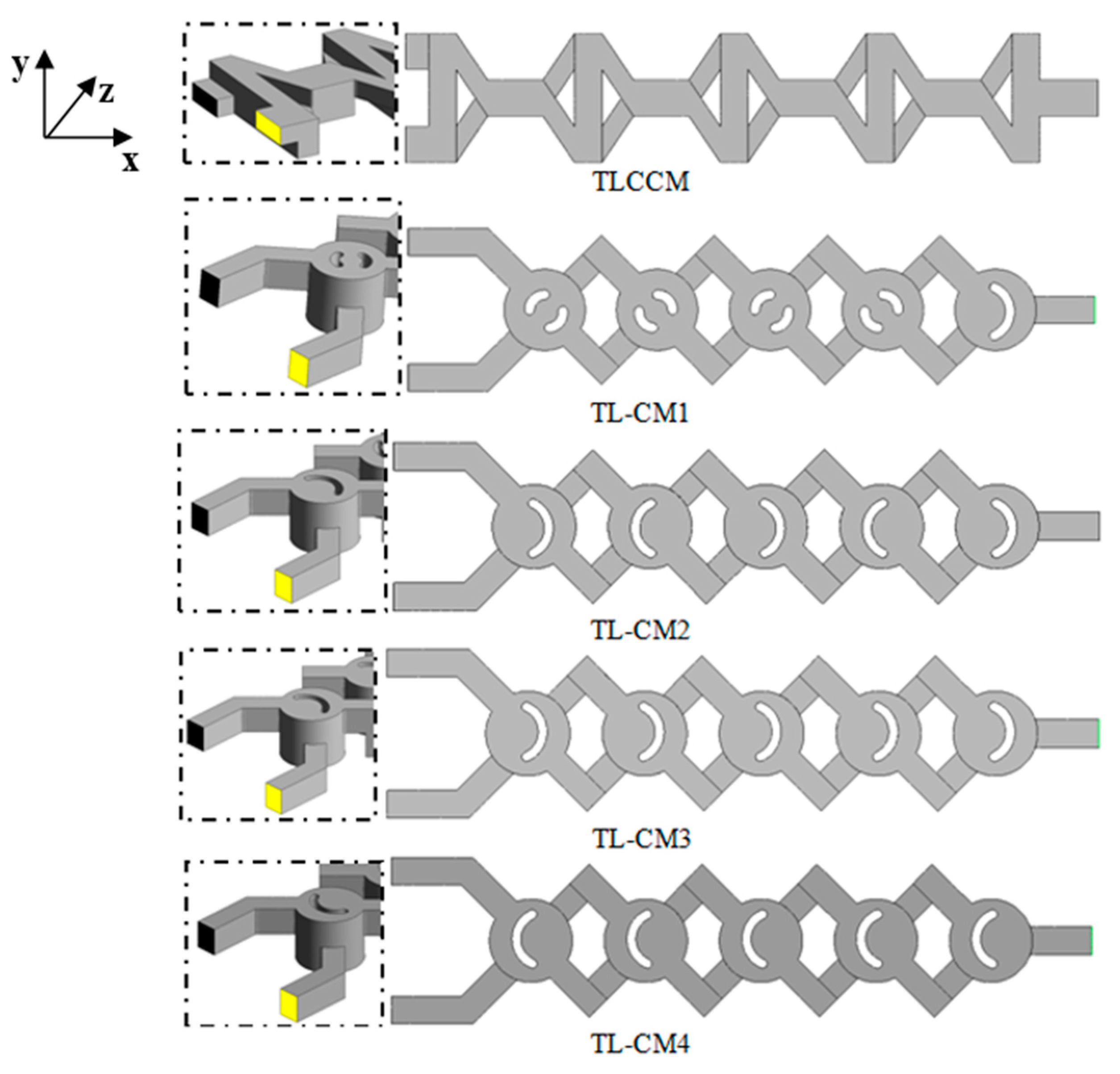
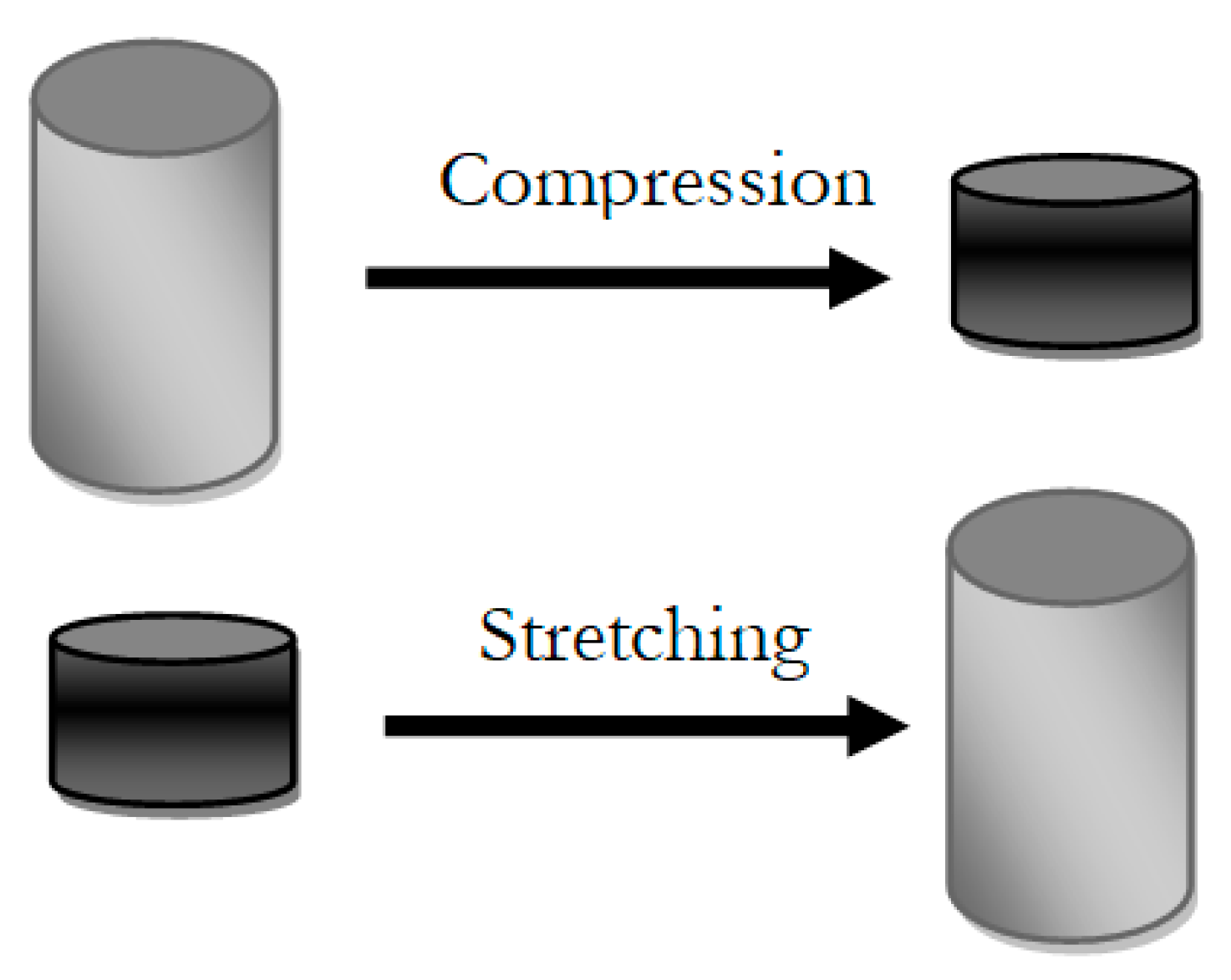
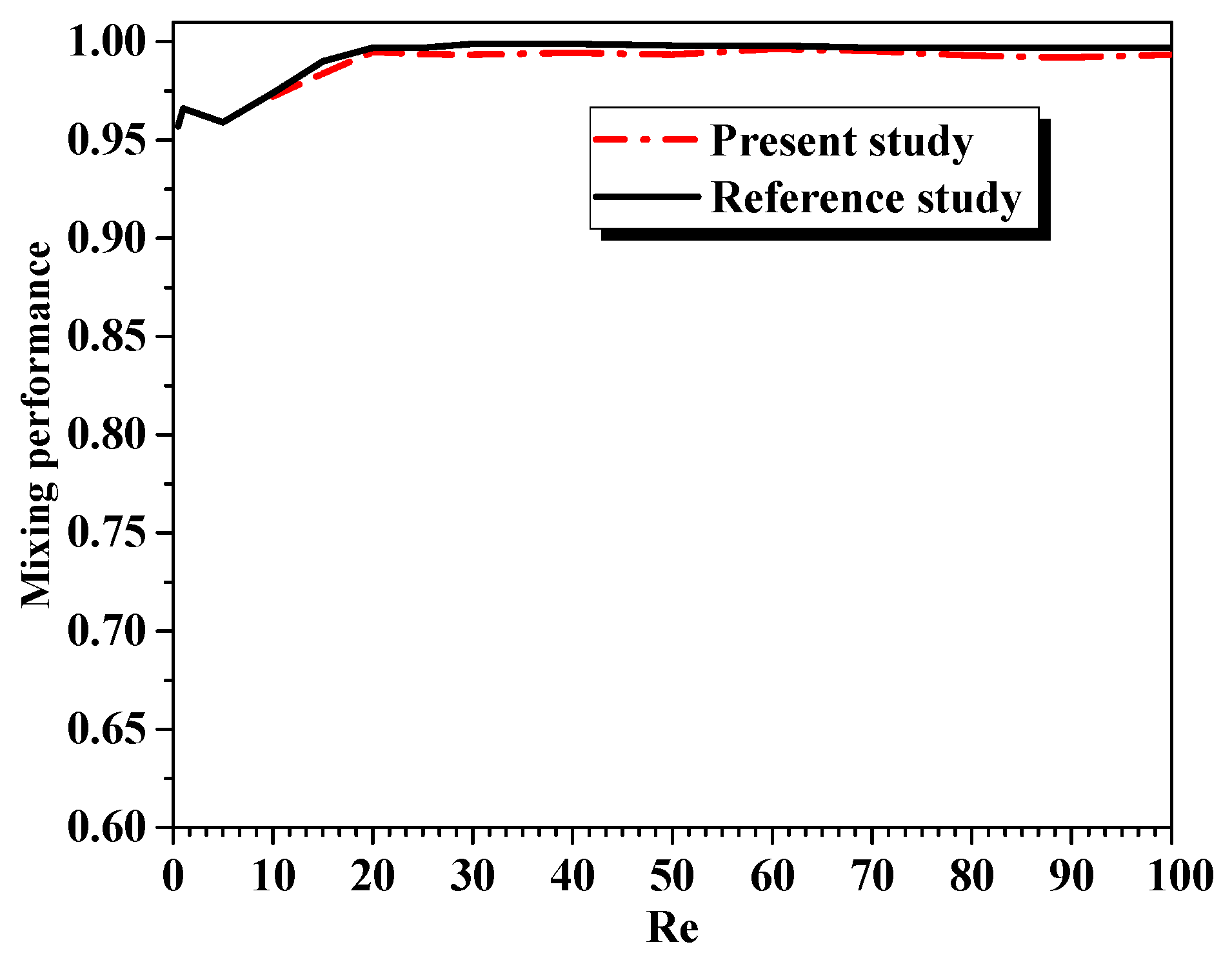
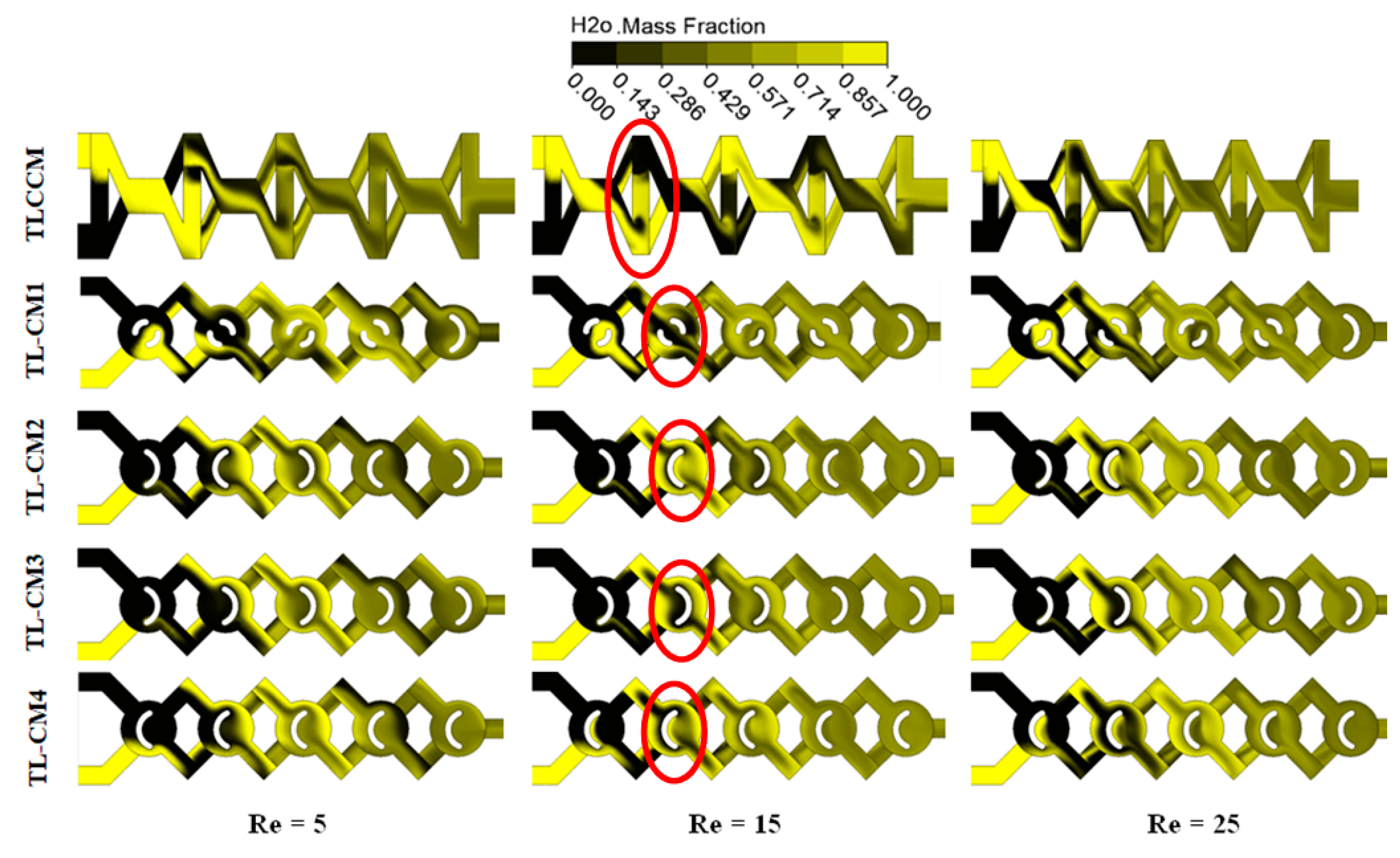
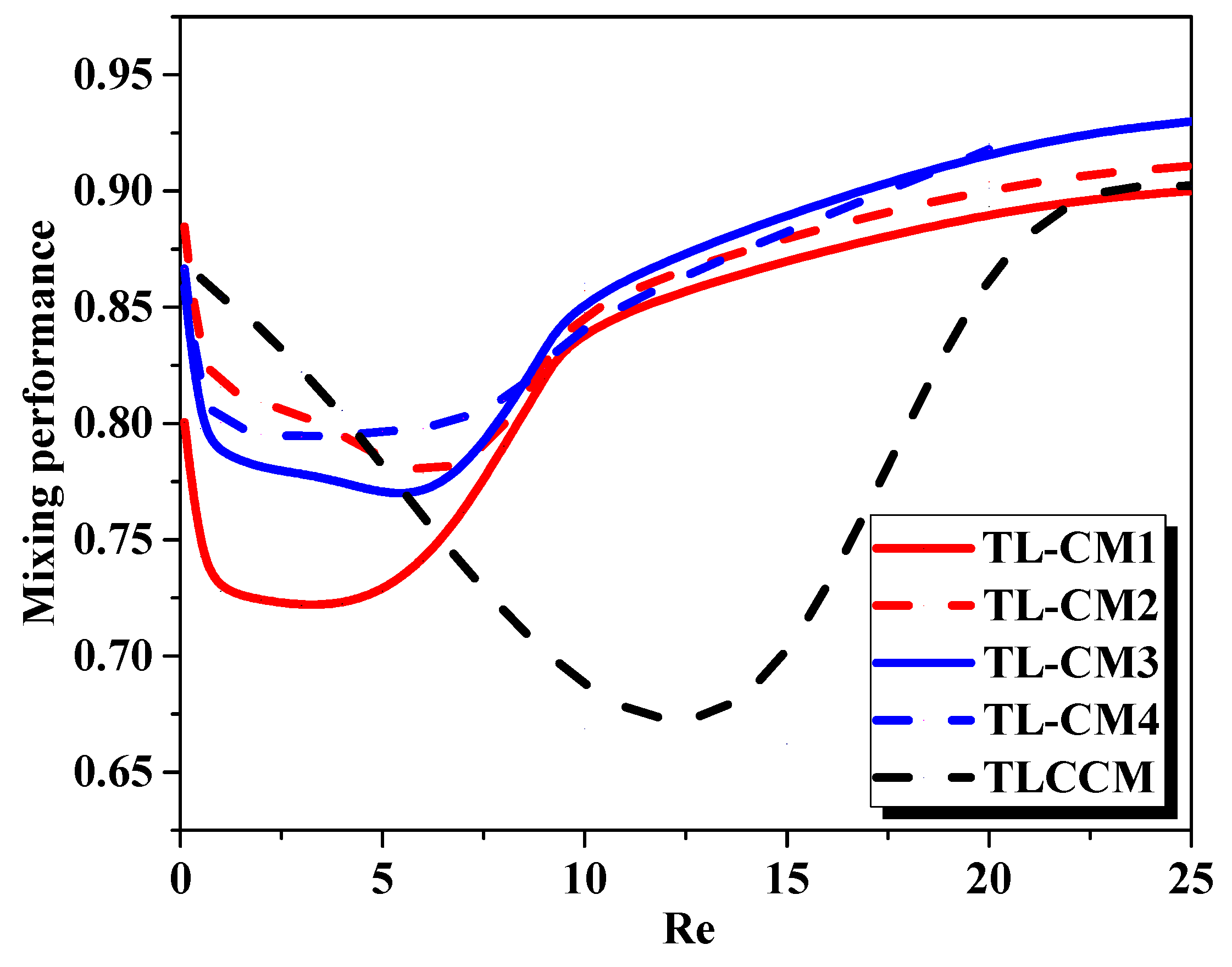
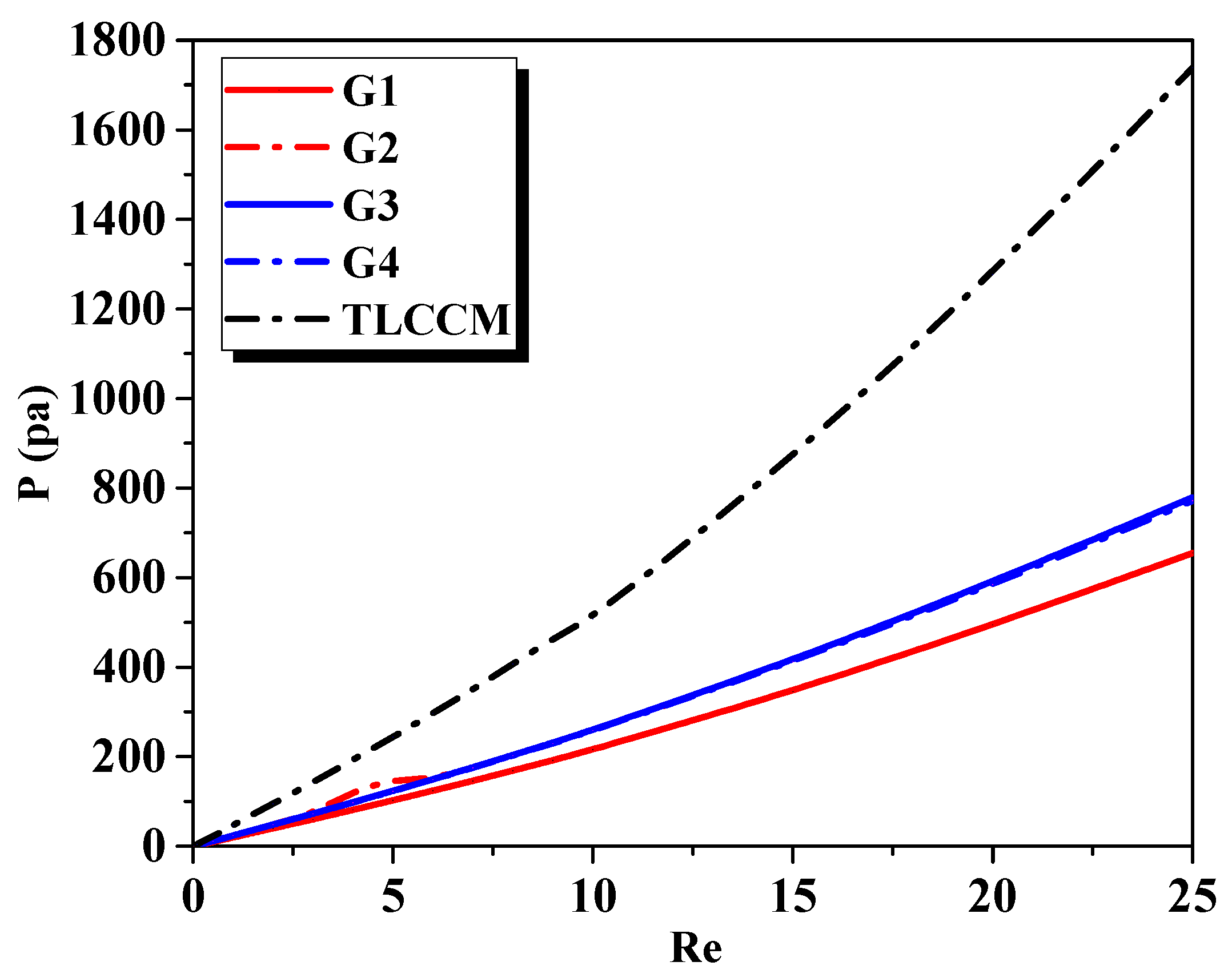
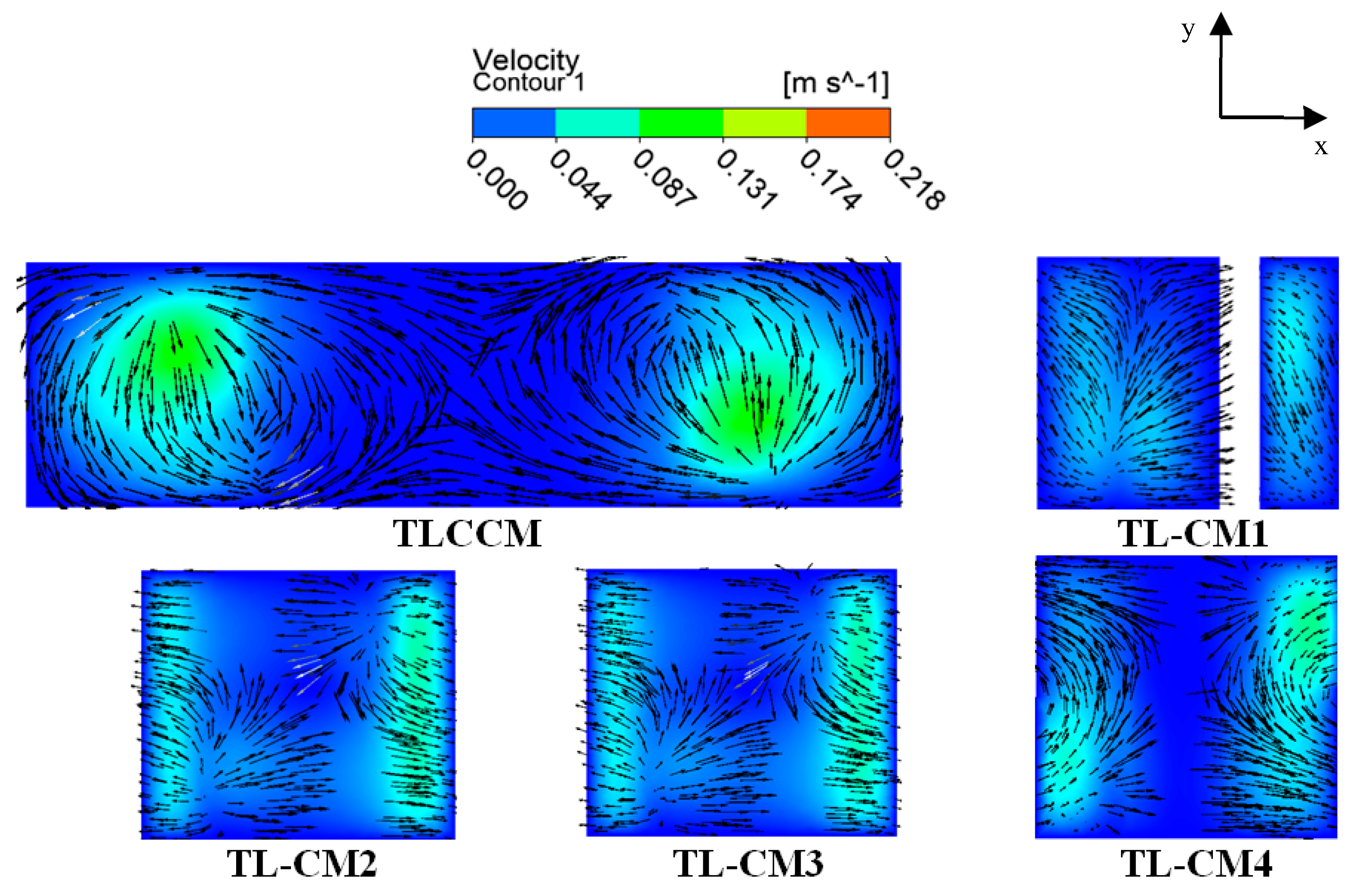
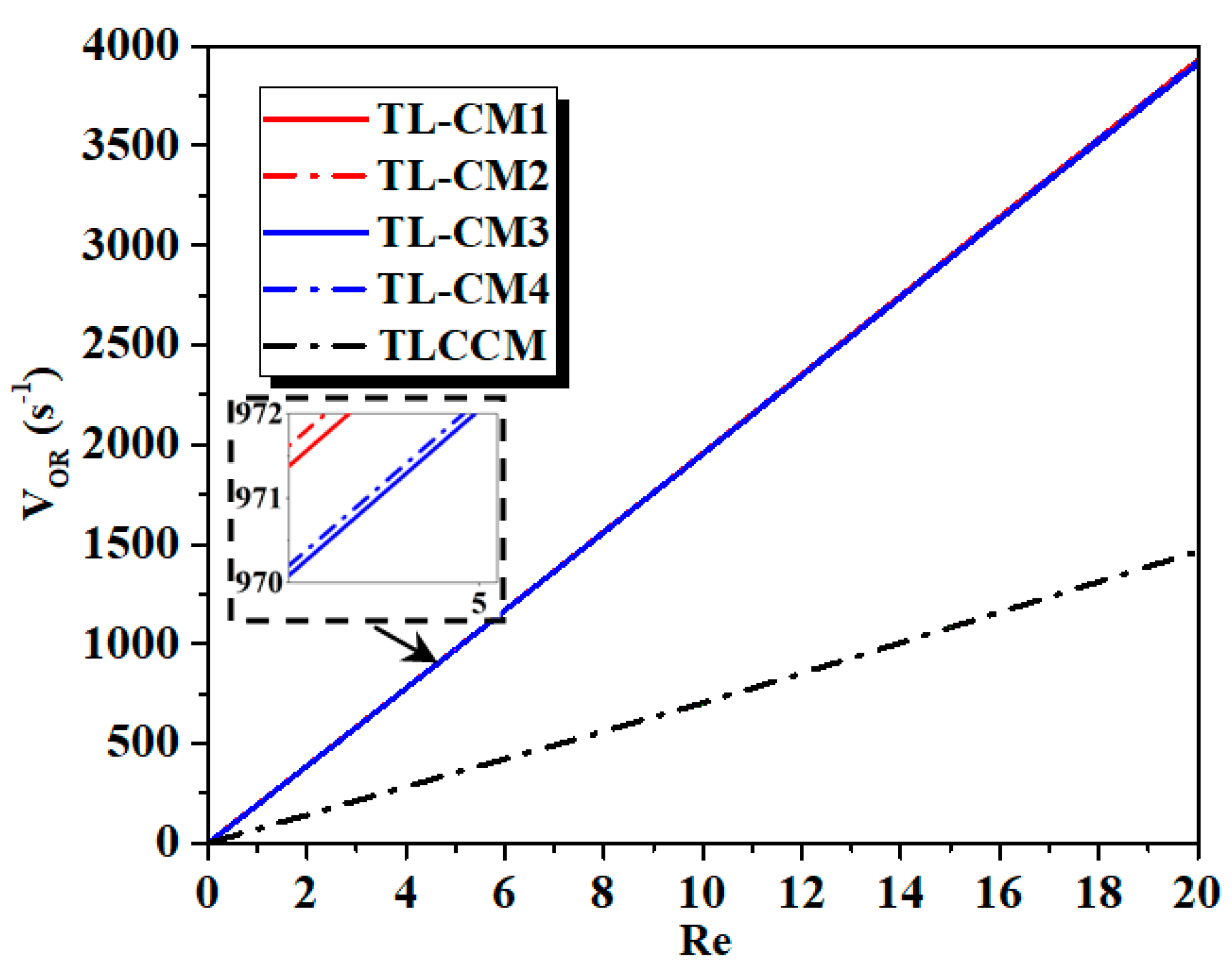
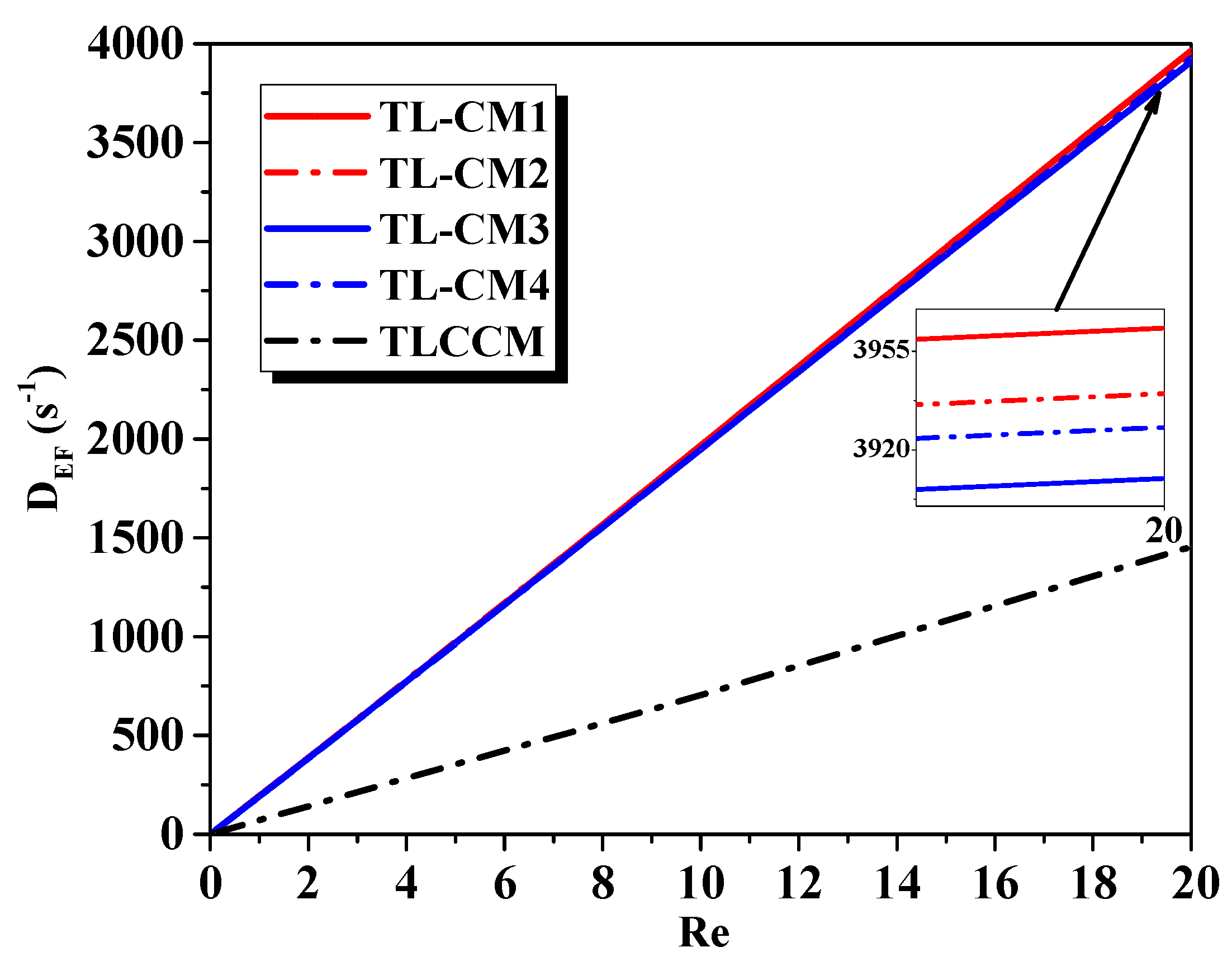
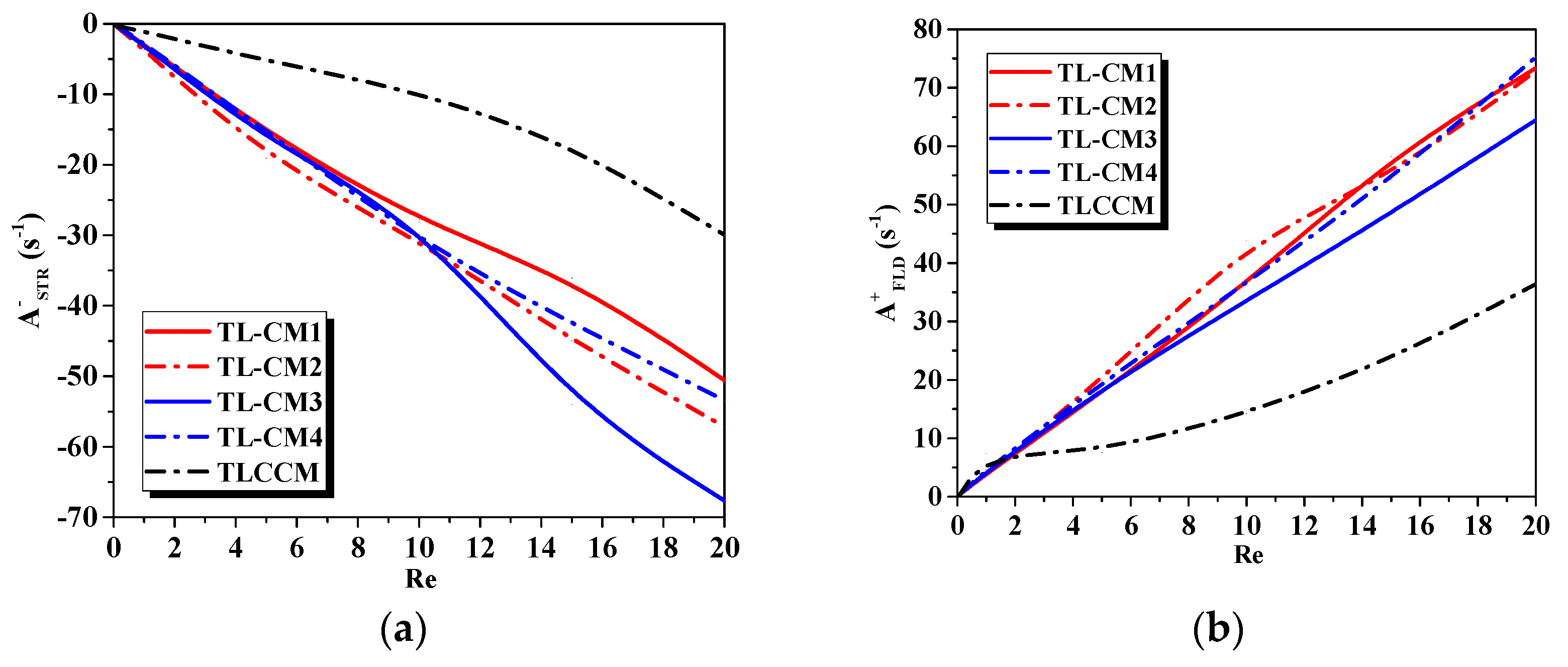
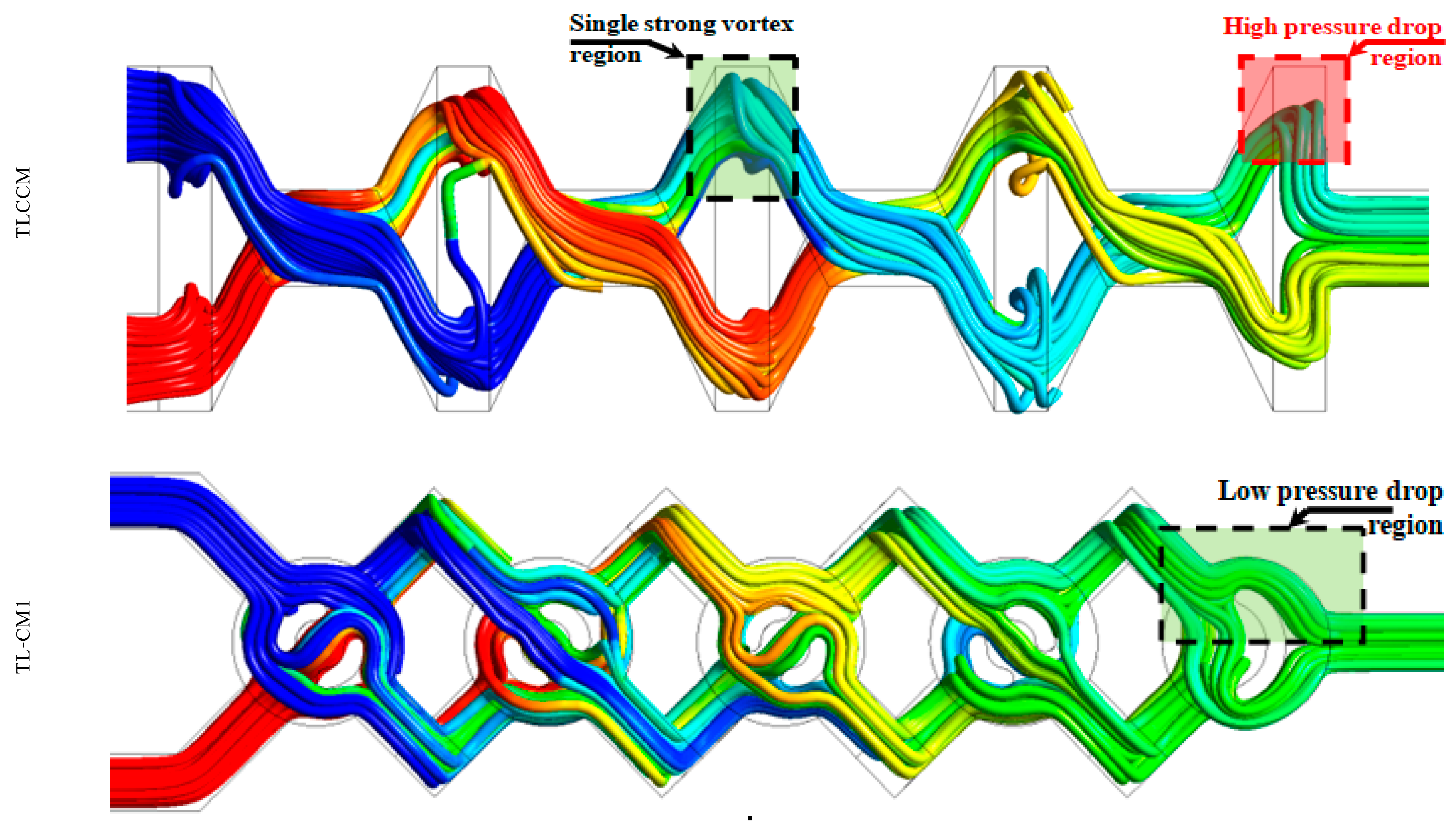
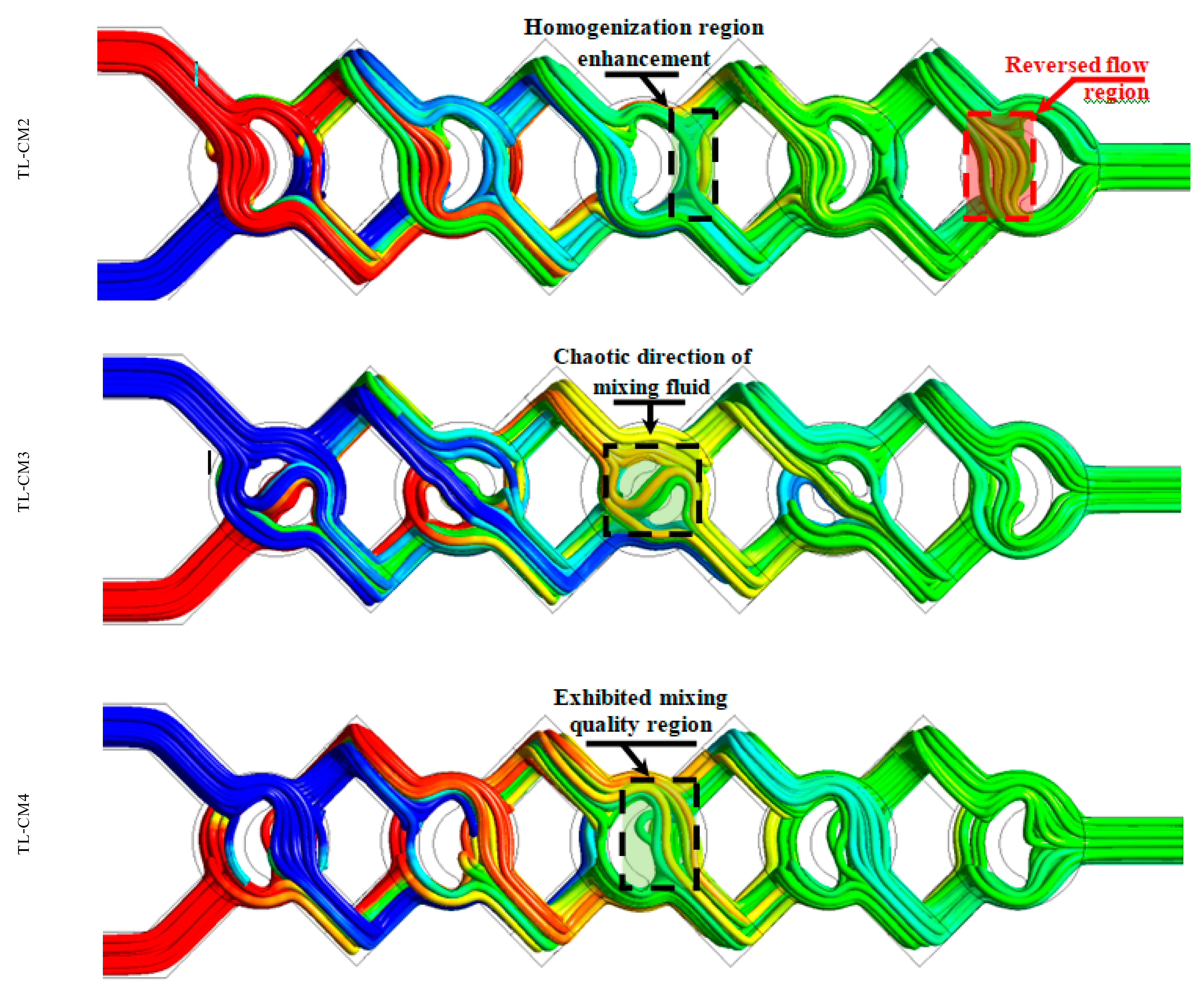
Publisher’s Note: MDPI stays neutral with regard to jurisdictional claims in published maps and institutional affiliations. |
© 2021 by the authors. Licensee MDPI, Basel, Switzerland. This article is an open access article distributed under the terms and conditions of the Creative Commons Attribution (CC BY) license (http://creativecommons.org/licenses/by/4.0/).
Share and Cite
Naas, T.T.; Hossain, S.; Aslam, M.; Rahman, A.; Hoque, A.S.M.; Kim, K.-Y.; Islam, S.M.R. Kinematic Measurements of Novel Chaotic Micromixers to Enhance Mixing Performances at Low Reynolds Numbers: Comparative Study. Micromachines 2021, 12, 364. https://doi.org/10.3390/mi12040364
Naas TT, Hossain S, Aslam M, Rahman A, Hoque ASM, Kim K-Y, Islam SMR. Kinematic Measurements of Novel Chaotic Micromixers to Enhance Mixing Performances at Low Reynolds Numbers: Comparative Study. Micromachines. 2021; 12(4):364. https://doi.org/10.3390/mi12040364
Chicago/Turabian StyleNaas, Toufik Tayeb, Shakhawat Hossain, Muhammad Aslam, Arifur Rahman, A. S. M. Hoque, Kwang-Yong Kim, and S. M. Riazul Islam. 2021. "Kinematic Measurements of Novel Chaotic Micromixers to Enhance Mixing Performances at Low Reynolds Numbers: Comparative Study" Micromachines 12, no. 4: 364. https://doi.org/10.3390/mi12040364
APA StyleNaas, T. T., Hossain, S., Aslam, M., Rahman, A., Hoque, A. S. M., Kim, K.-Y., & Islam, S. M. R. (2021). Kinematic Measurements of Novel Chaotic Micromixers to Enhance Mixing Performances at Low Reynolds Numbers: Comparative Study. Micromachines, 12(4), 364. https://doi.org/10.3390/mi12040364








